Smoking Stiltgrass*
Puddock Hill Journal #47: Our battle against Japanese stiltgrass is fully engaged.
*No, don’t roll the stiltgrass into a joint and smoke it, please. My headline today speaks metaphorically. But, yes, please do smoke it if you mean, as I do, destroying it.
Author’s note:
If you like reading fiction and wonder what our future world might look like, please check out my new novel, We Once Were Giants, available in Kindle and paperback versions. Early reviewers are calling it “powerful,” “compelling,” and “intense.”
An old saw reminds us that if something can’t go on forever, it won’t. Usually, one sees this bit of wisdom applied to market bubbles, but it springs to mind as Japanese stiltgrass (Microstegium vimineum) ruins my extended no-mow period.
I’d like very much to let the native ecology convert large portions of our lawn to healthy meadow, an impulse that prompted me to allow No-Mow May to run straight into August over the past couple years.
The most fabulous result we had from letting large swaths of lawn go unmowed was the appearance of black-eyed Susan (Rudbeckia spp.) behind the garden shed. Here’s a lovely clump of it:
In that particular section of the property, very few invasive plants have arisen. The notable exception was bitter dock (Rumex obtusifolius), a European native that behaves aggressively at Puddock Hill, although it is not officially listed as an invasive plant in Pennsylvania to my knowledge. I occasionally hit these intruders with my string trimmer.
One notable if modest plant that proliferates in our no-mow areas is a weedy native annual called horseweed (Conyza canadensis). Its small flowers are easily overlooked, the fluffy seed heads only slightly more prominent. Here it grows in a no-mow area along the driveway:
Horseweed is native to all Lower 48 states and throughout Canada. While the Lady Bird Johnson Wildflower Center database does not provide any information on its ecological niche, the Illinois Wildflowers website has this to say:
The flowerheads of Horseweed (Conyza canadensis) attract small Halictid bees, Sphecid wasps, Vespid wasps, Perilampid wasps, Syrphid flies, Tachinid flies, flesh flies (Sarcophaga spp.), Muscid flies, plant bugs (Miridae), and other insects. Bee visitors suck nectar or collect pollen, fly visitors suck nectar or feed on pollen, while the remaining floral visitors feed on nectar. A variety of insects feed on the leaves, bore through the stems, or consume other parts of Horseweed. These species include the stem-boring larvae of a tumbling flower beetle (Mordellistena pustulata), larvae of Calycomyza humeralis (Aster Leafminer) and other leaf-miner flies, larvae of Asteromyia modesta (Horseweed Blister Midge) and Neolasioptera erigerontis (Horseweed Stem Gall Midge), Lygus lineolaris (Tarnished Plant Bug) and Taylorilygus apicalis (Broken-backed Bug), Uroleucon erigeronense and other aphids, Melanoplus differentialis (Differential Grasshopper) and Oecanthus quadripunctatus (Four-spotted Tree Cricket), and the larvae of such moths as Cucullia alfarata (Halloween Paint), Cucullia speyeri (Speyer's Paint), Schinia arcigera (Arcigera Flower Moth), and Schinia lynx (Lynx Flower Moth).
In my book, this description means it supports enough arthropod species to make a healthy contribution to the local ecology. And yet, this time of year, I must mow it down along the driveway. You see, stiltgrass has infiltrated.
Stiltgrass takes a while to get going. It germinates late and bolts in August, shortly before setting seed. This sequence can lull one into believing last year’s efforts have defeated it, only to be disappointed once again as late summer draws nigh. And that disappointment is profound at Puddock Hill, where stiltgrass suddenly reveals itself everywhere from planting beds to meadows to woods.
One common strategy among many invasives is to be early out the gate and late to die back, but stiltgrass defies this behavior. Furthermore, it is shallow rooted, easy to pull up by hand, and the seeds only have viability in the soil for about three years. Yet, it remains both highly successful and extremely harmful to the local ecology, as described here in a Penn State Extension article:
The rapid growth and abundant seed production of Japanese stiltgrass allows it to displace less competitive native vegetation in a wide range of ecosystems. It can inhibit tree survival and growth when it changes soil nutrient cycling processes; a potential threat to the future of our forests. White-tail deer, horses, and goats avoid it because it has little to no value as food for grazers. The deer consume native plants instead, allowing stiltgrass to invade the spaces they create. In the fall, the thick layer of smothering thatch is slow to decompose. Left unchecked, Japanese stiltgrass can overtake native vegetation in three to five years.
Let me emphasize that last point: It can overtake native vegetation in three to five years!
In this picture, you can see it already having achieved dominance:
This was taken a year after we made assiduous efforts to mow down the stiltgrass everywhere we could find it before it set seed. Fortunately, there are no seed heads visible in that picture, and these plants have subsequently been terminated. But I wonder how many seeds remain viable in the ground (news flash: likely millions) and whether anything has survived in that spot to compete with it.
In places, very selectively, we can take extra time to string trim the stiltgrass around favored natives, as we did here around a passel of great blue lobelia (Lobelia siphilitica) growing by the stream—going so far as to hand pull the stiltgrass when it was too close to lobelia plants to safely string trim. (You will likely identify the plant beside the stake in the foreground as a tuliptree sapling that I’ve decided to let grow.)
Places like nearby Longwood Gardens and Mt. Cuba Center have hundreds of employees and volunteers to do this work. We have ourselves and contract workers from a weekly service, whom I paid extra this week to fight off invasions of stiltgrass and mile-a-minute vine.
Here’s what the wet meadow looked like after they went through targeting these invasives and attempting to avoid native communities:
It looks a bit bleak, but among the spared were jewelweed (Impatiens capensis), deertongue grass (Dichanthelium clandestinum), New York ironweed (Vernonia noveboracensis), swamp agrimony (Agrimonia perviflora), tall tickseed (Coreopsis tripteris), goldenrod (Solidago spp.), and others. No doubt countless natives also fell in this battle against invasives, and next week I must get the service back to assault other areas before it’s too late.
Thus no-mow August succumbs to stiltgrass slaughter.
The native tickseed I mentioned above flowers in the wet meadow:
A young native Eastern cottontail (Sylvilagus floridanus) reposes on the front lawn:
Lush native elderberry fruit (Sambucus spp.) awaits migratory birds:
A luna moth (Actias luna) poses on the old black walnut by our entrance:
A pearl crescent butterfly (Phyciodes tharos) rests on a blade of grass near the big pond:
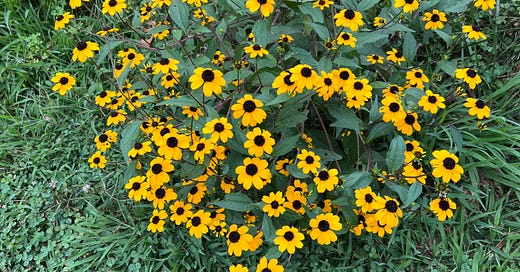



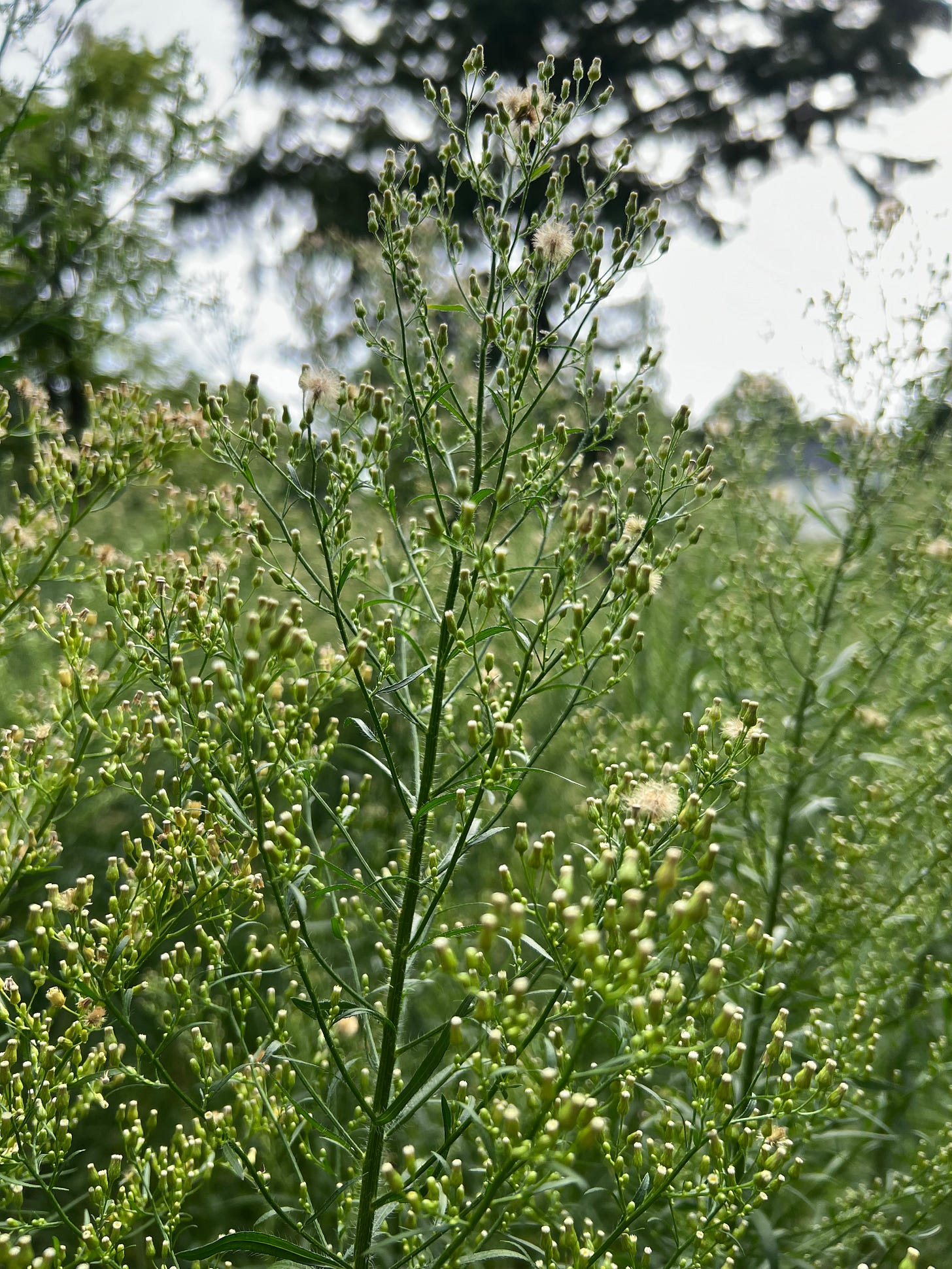

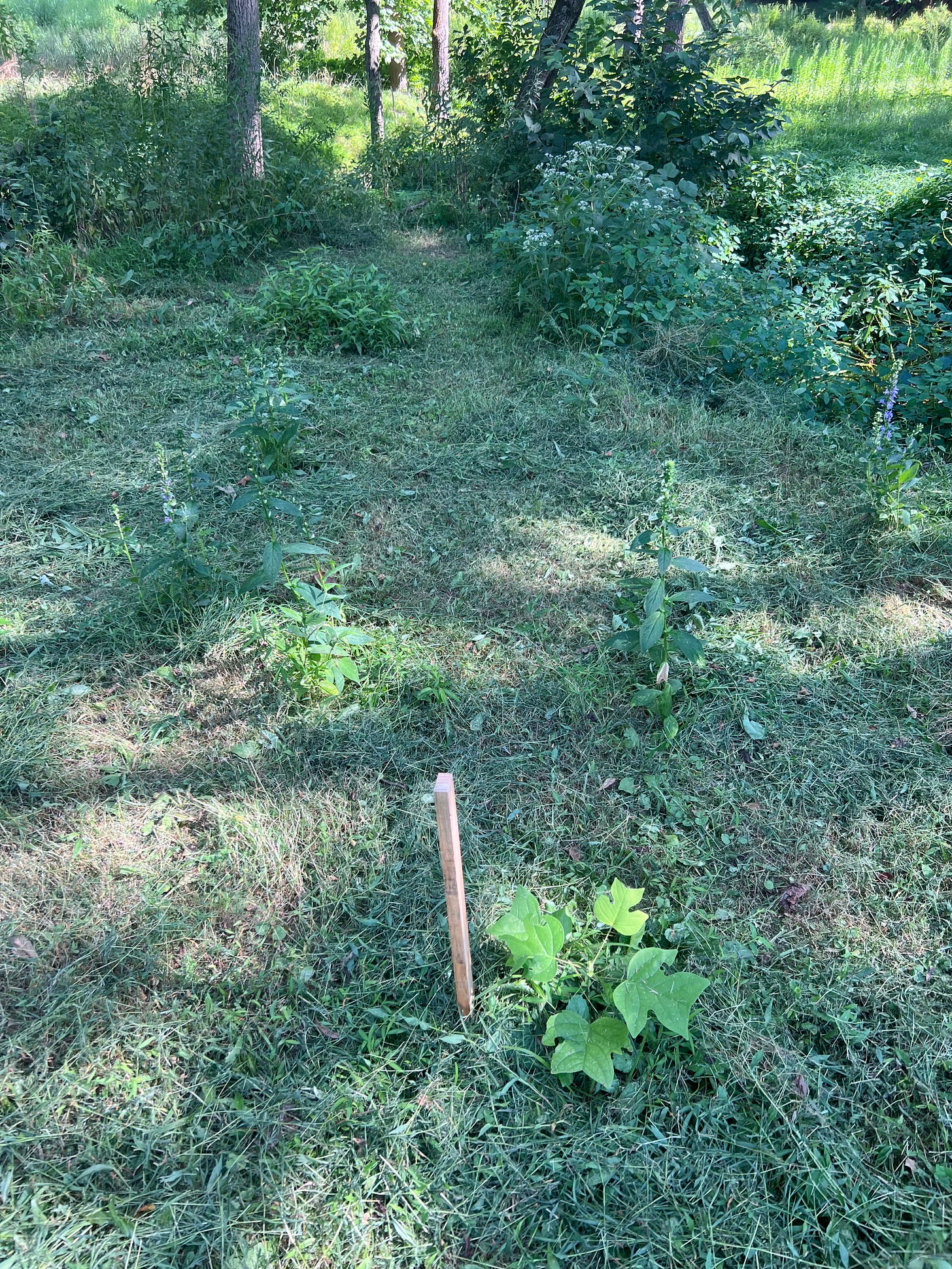

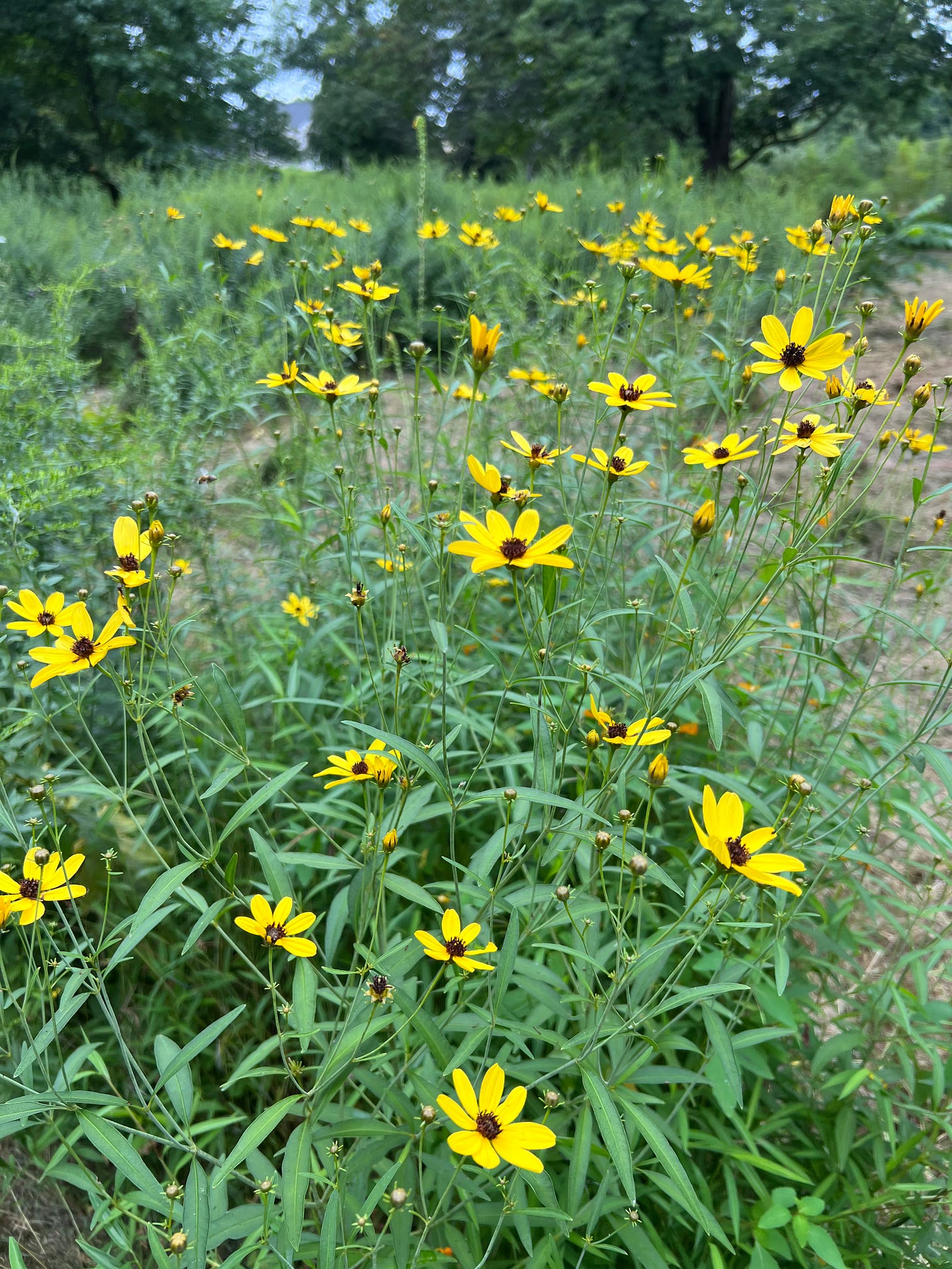
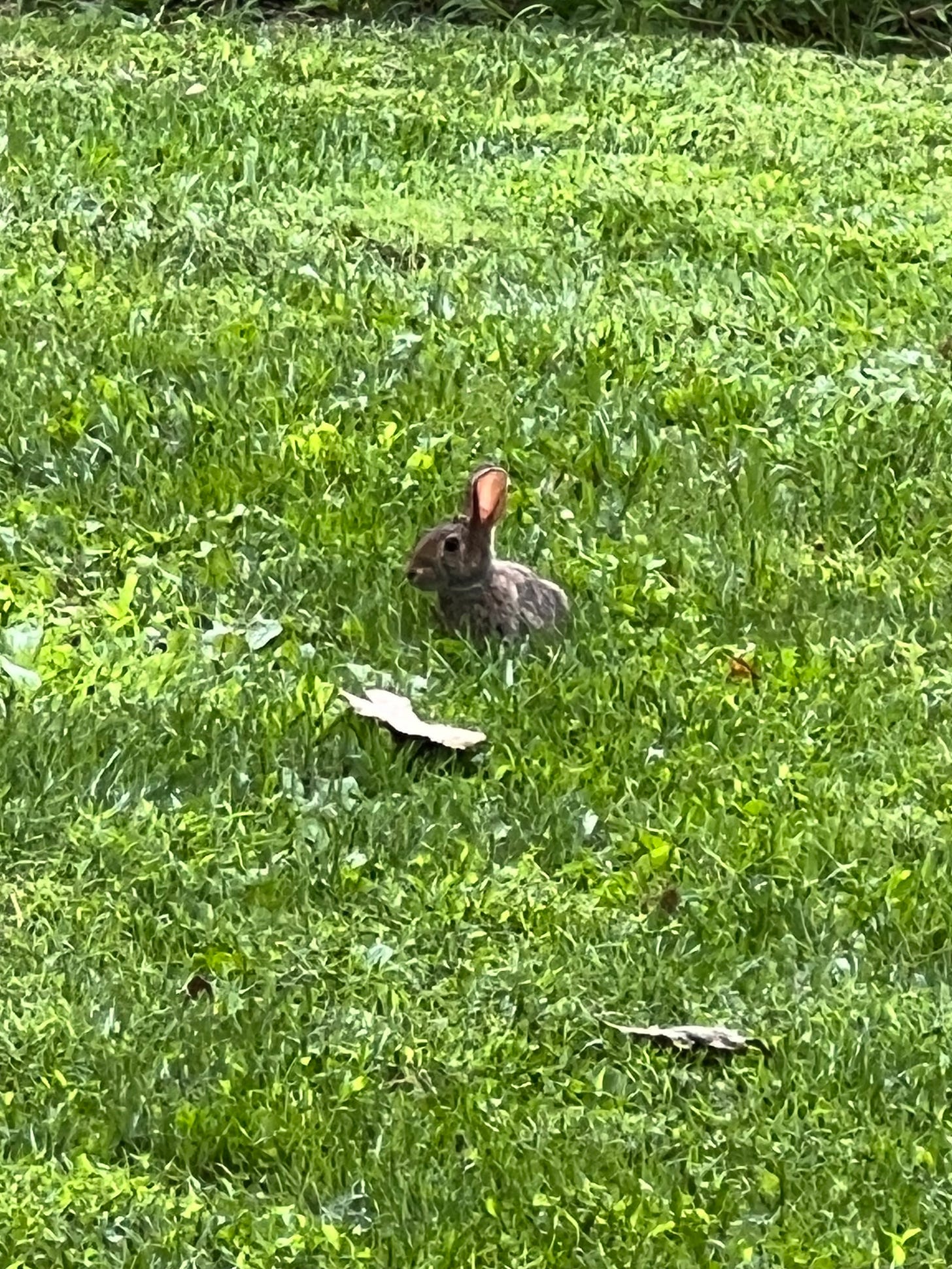
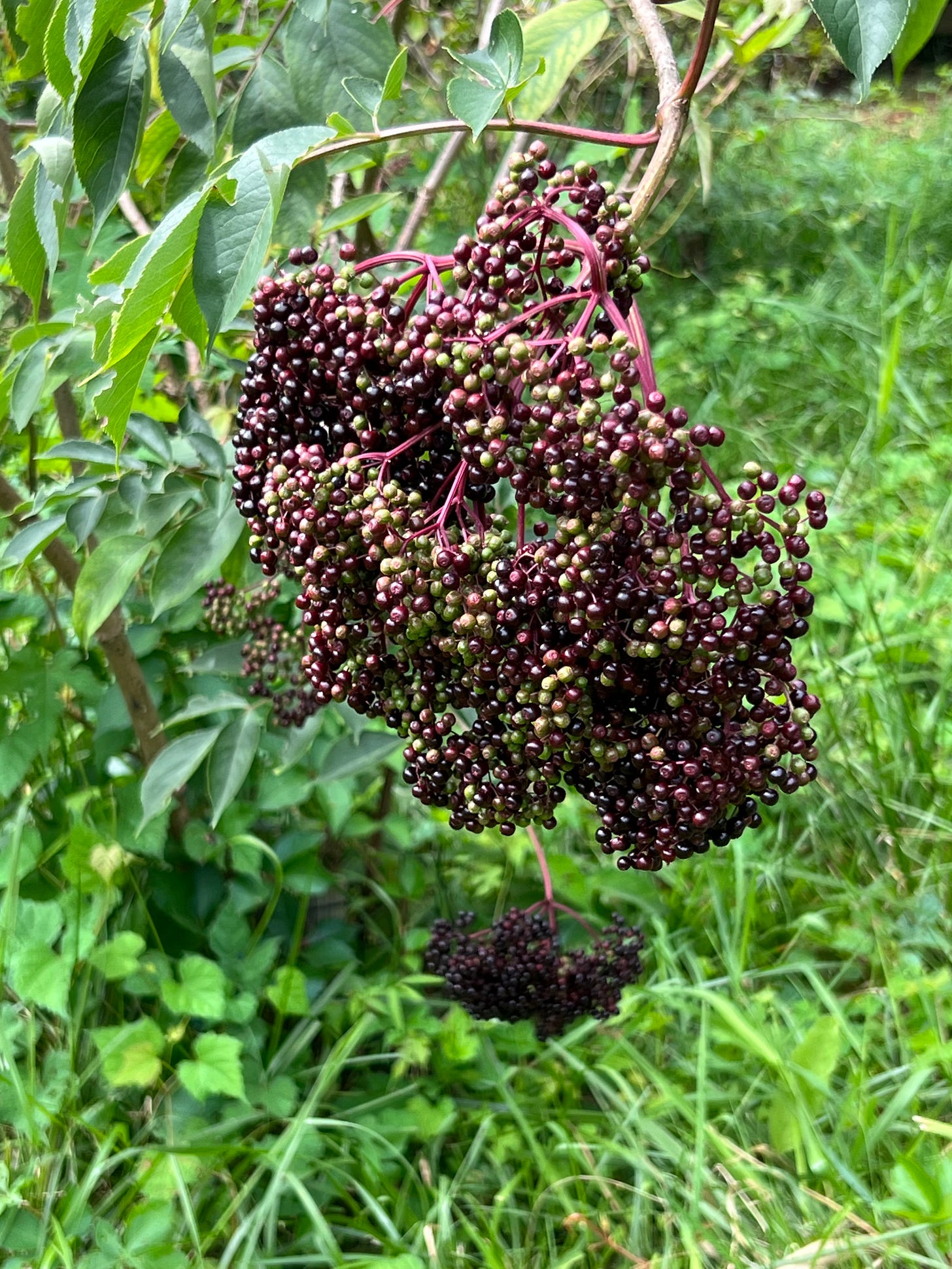


Thanks for your comment, Sally. We don't use herbicides. Stiltgrass is an annual. The key is to mow it down before it sets seed, therefore there are no seeds to spread. Admittedly, this is a tall task given how much volume of this invasive there is all over the place.
https://www.forestrydistributing.com/sfm-75-herbicide-oust-xp-alligare
Joel,
Don just had Steve Cottrell, the president of the Audubon Society out here. We're trying to attract purple martins. He recommended spray a very small, 0.2oz per gallon of this herbicide. It only affects the stilt grass but nothing else in the broad leaf grass family. We sprayed last weekend and so far have not seen a result but apparently it can take up to a month to see the difference. I'll let you know if it works, or maybe give it a try yourself. He claims the cutting just spreads the seeds and makes the plant stronger for years to come. Believe we were very sceptical but got brave and gave it a try. Sally